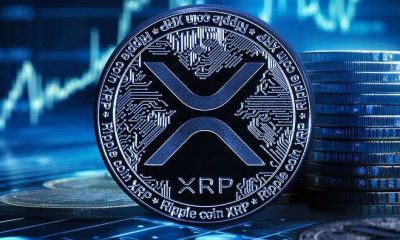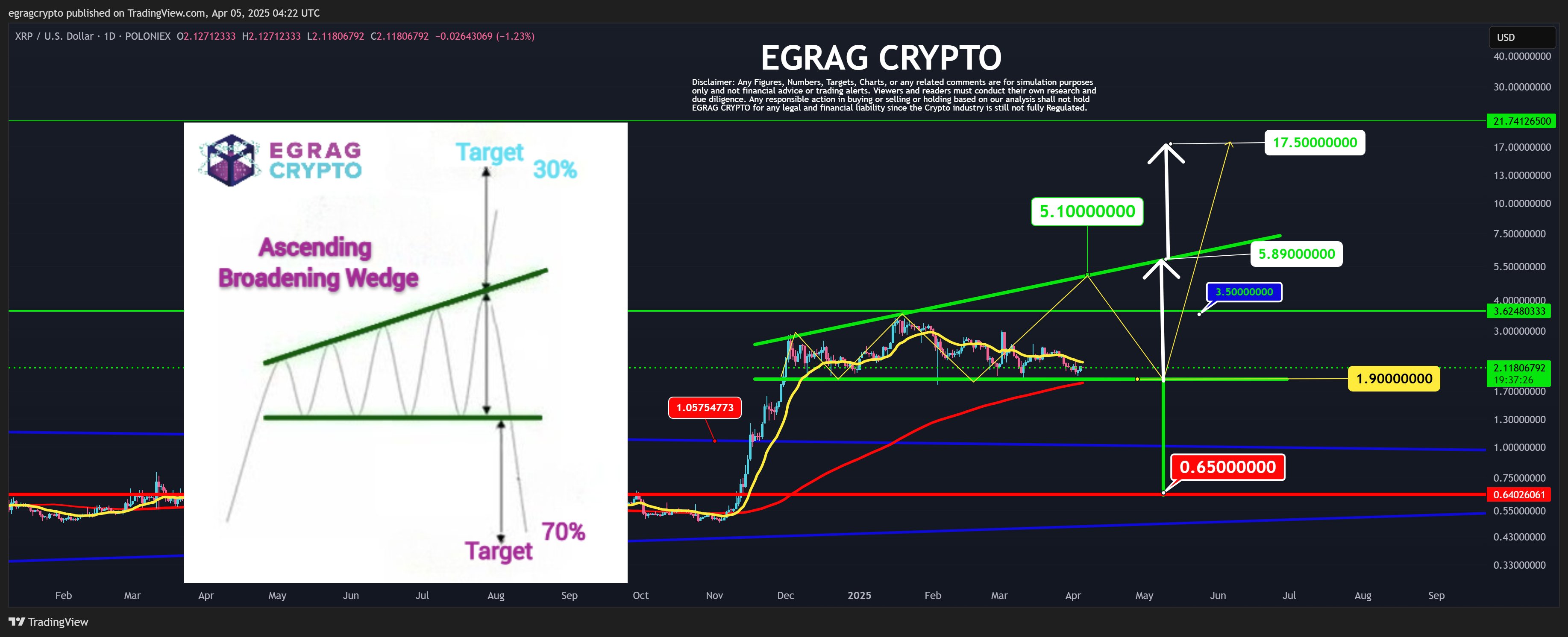Market
How Will XRP Ledger Boost RWA Tokenization? Experts Weigh In

Ripple is actively promoting the XRP Ledger (XRPL) as the ideal blockchain for tokenizing real-world assets (RWA) on an institutional scale. Ripple emphasizes security, scalability, and interoperability, positioning itself as a dependable platform for decentralized finance (DeFi) and managing tokenized assets.
In a recent exclusive interview with BeInCrypto, Ross Edwards, Senior Director for Solutions and Delivery at Ripple, offers insights into why the XRPL is uniquely positioned to bridge traditional finance with DeFi.
Instant Settlement, Stability, and Lower Risk: Why XRPL is Suitable for Financial Institutions
When discussing the XRPL’s role in transforming institutional finance, Ross Edwards was unequivocal about its foundational advantages. He pointed out the unique benefits that make the blockchain stand out for institutions looking to tokenize RWAs.
For Edwards, the key to XRPL’s success lies in its design. For instance, he highlighted that the XRPL’s transaction speed—settling in just 3 to 5 seconds at minimal cost—addresses the high costs and delays often associated with traditional financial systems.
“The XRP Ledger enables instant settlement of value, together with transparency and auditability that can really change the risk profile of transactions,” he explained.
Read more: What is The Impact of Real World Asset (RWA) Tokenization?
He also elaborated that the XRPL employs a strong governance mechanism. This allows the community to introduce amendments to meet its needs, including those of financial institutions.
Moreover, it eliminates the need for custom writing, deploying, and managing smart contracts, as well as the associated audits. These functionalities ultimately will reduce risks, which is crucial for financial institutions.
“It was built for creating value and assets on-chain, for holding those securely, for trading and transferring those assets. So, it’s natively built for this. The XRP Ledger is a proven technology. It’s been running for 11 to 12 years. It’s extremely stable. […] You simply have to call the APIs of the XRP Ledger to enable those use cases,” Edwards argues.
Additionally, the Automated Market Maker (AMM) is one of Ripple’s core innovations on the XRPL. This feature, integrated directly into the protocol, allows institutions to engage with DeFi securely without the need for potentially unreliable third-party smart contracts.
What sets the XRPL’s AMM apart is its ability to aggregate liquidity across the protocol. Ripple’s liquidity strategy is specifically designed to meet the needs of institutional users.
By incorporating the AMM into the XRPL’s decentralized exchange (DEX), the process for institutions to participate in DeFi is simplified. Such a mechanism ensures both security and efficiency for large-scale operations.
The XRPL’s AMM is also capable of consolidating liquidity from across the protocol. This system ensures that institutions have access to substantial liquidity pools and can execute transactions at the most favorable prices. Moreover, it effectively minimizes slippage—a significant concern for institutions executing large transactions—and guarantees continuous liquidity for trading purposes.
Additionally, the introduction of the Multi-Purpose Token (MPT) standard will allow institutions to create complex token structures representing various asset classes. Set for release in Q3, MPT will provide greater flexibility for institutions looking to tokenize and manage diverse portfolios of assets on the XRPL.
Ripple is also looking to expand the use of the XRPL for institutional DeFi with the upcoming launch of Ripple USD (RLUSD), a fully-backed stablecoin pegged to the US dollar. Edwards sees this stablecoin as a significant step toward improving liquidity and cross-border transactions for institutions using the XRPL.
“If you’re going to work in the real-world asset tokenization space, stablecoins are a must-have. It’s going to continue to grow in importance, not just importance in the crypto world but actually importance in the financial world. And that’s why Ripple believes that issuing Ripple USD will add to the existing stablecoins out there. They will suit specific institutions and specific use cases and really help fuel or continue the growth of tokenization overall,” he said.
Leveraging DIDs and Strategic Partnerships for Growing Impact in Tokenized Assets
Besides solid infrastructure and technologies, security and compliance are paramount for institutions, especially in tokenized assets. In a prior conversation with BeInCrypto, Ripple’s Markus Infanger, Senior Vice President of RippleX, highlighted how the XRPL leverages Decentralized Identifiers (DID) to address these concerns effectively.
By integrating DIDs, the XRPL enables institutions to securely and verifiably manage user identities, facilitating compliance with Know Your Client (KYC) and Anti-Money Laundering (AML) standards. This integration helps minimize the risks of fraudulent transactions by streamlining KYC/AML processes. As a result, it enhances both security and regulatory adherence for tokenized asset transactions.
“The combination of these features, as well as others proposed to support institutional DeFi on the XRPL, such as a native Lending Protocol and Oracles, are making it easier to integrate tokenized real-world assets into on-chain financial infrastructure. Ultimately, DeFi provides new financial rails for actions such as trading, collateralizing, investing, and borrowing. Bringing real-world assets on-chain and exposing them to these rails opens up new opportunities—which is the real value of tokenizing real-world assets,” Infanger elaborated.
The increasing use of the XRPL in institutional finance stands out through its partnerships with key industry players. For example, Ripple’s partnership with OpenEden led to the introduction of tokenized US treasury bills (T-bills) on the XRPL.
Similarly, Ripple has partnered with Archax, the UK’s first regulated digital asset exchange, broker, and custodian. Archax plans to bring hundreds of millions of dollars in tokenized RWAs onto the XRPL in the coming year.
Balancing Short-Term Gains and Long-Term Growth in Tokenization
Despite the XRP Ledger’s strong foundation for institutional adoption, it has faced some challenges, particularly in on-chain activity. A recent report revealed that in the second quarter of 2024, the number of transactions on the XRPL fell by over 65% compared to the first quarter. This decrease is also seen in transaction volumes and overall DEX engagement, where trading volume fell by nearly 43%.
The average transaction cost on the XRPL also increased substantially. In Q2, the cost of transactions more than doubled compared to Q1, rising by 168%, which could contribute to the drop in activity. Additionally, fewer new wallets were created on the network, with wallet growth decreasing by 45.8%.
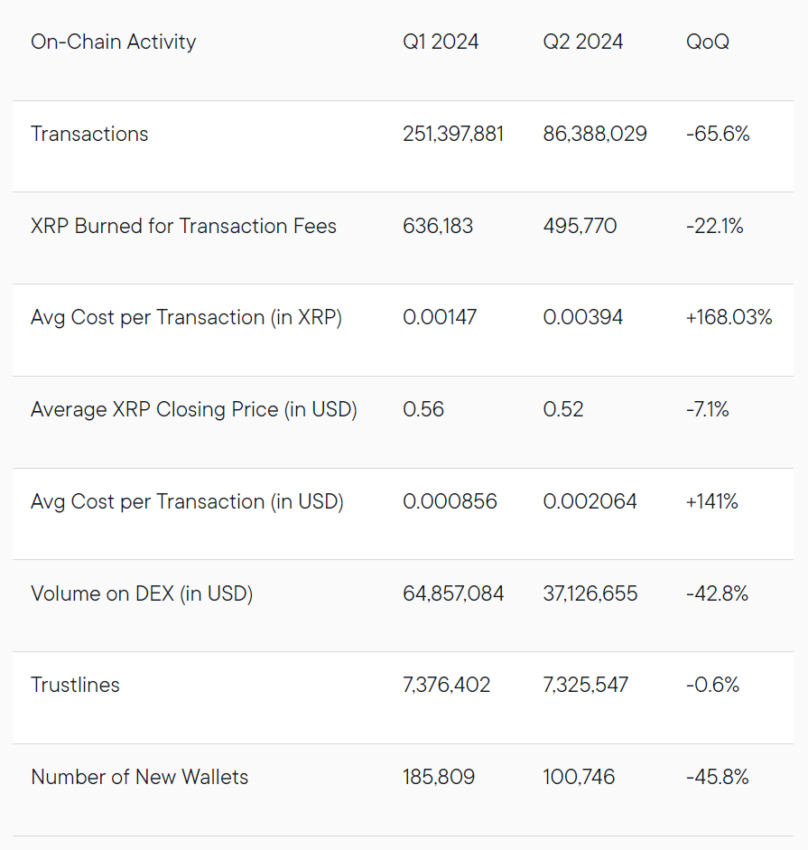
Furthermore, Edwards remarked that the challenges of tokenization are beyond the XRPL itself. He acknowledged that one of the biggest challenges in tokenization is its long-term nature. According to him, this requires patience and gradual ecosystem building.
“Tokenization is not something that can be done instantly. It’s not dependent on someone’s decision or ability to take an asset, write a piece of code, and store it somewhere, even if it’s a blockchain or whatever. That’s actually a very simple process. It’s about building the ecosystem and connecting together these value chains,” he said.
Edwards emphasized that financial institutions need immediate, tangible returns. This means each step in the tokenization process must deliver short-term value while setting the foundation for long-term growth.
He also noted that this requirement is a delicate balancing act that Ripple and the broader industry must navigate carefully. Furthermore, Edwards highlighted that financial institutions must play a key role in getting this balance right, as their participation is critical for the success of the tokenization ecosystem.
Read more: RWA Tokenization: A Look at Security and Trust
However, in the near term, Edwards believes that increasing demand and understanding the drivers behind tokenization will be essential. As the utilization of tokenized assets grows—moving beyond just purchasing and holding to broader use cases—the market will start to expand swiftly.
“We’re going to see, once that happens and unlocks, once there’s more utilization of these tokenized assets, rather than just purchase and hold, we’re going to start to see this area ramp up considerably. And it’s going to become critical to the future of the financial system,” he concluded.
Disclaimer
Following the Trust Project guidelines, this feature article presents opinions and perspectives from industry experts or individuals. BeInCrypto is dedicated to transparent reporting, but the views expressed in this article do not necessarily reflect those of BeInCrypto or its staff. Readers should verify information independently and consult with a professional before making decisions based on this content. Please note that our Terms and Conditions, Privacy Policy, and Disclaimers have been updated.
Market
HBAR Could Avoid $30 Million Liquidation Thanks to Death Cross

HBAR has recently experienced a significant price correction, pulling the altcoin to a critical support level. As the market conditions continue to show weakness, the price action has left HBAR vulnerable.
However, this downside movement might be offering short traders a chance to avoid heavy liquidation losses.
Hedera Traders Stand To Lose A Lot
The liquidation map indicates a situation of concern for short traders. Approximately $30 million worth of short contracts are poised for liquidation if the HBAR price rises to $0.18. This could cause massive losses for traders who are betting against the asset. However, the current price range near $0.157 has provided some relief as the market struggles to breach lower support levels.
If HBAR maintains its position above key levels, these traders may be spared the liquidation risk for now. Despite the challenging market conditions, this scenario actually provides a buffer for traders, helping them avoid significant losses.
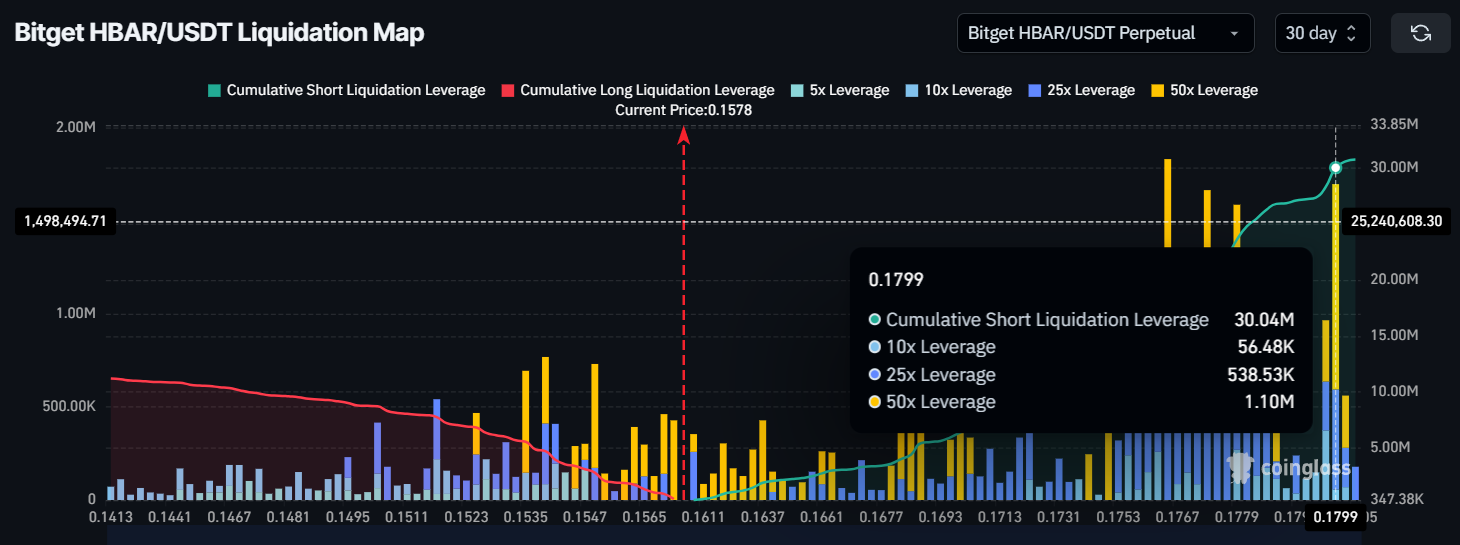
The overall macro momentum for HBAR shows signs of potential downside pressure as the cryptocurrency approaches a Death Cross. The 200-day exponential moving average (EMA) is just over 3% away from crossing the 50-day EMA.
This technical formation, when confirmed, signals a possible continuation of the bearish trend and could push HBAR further down in the coming days.
The close proximity of these two EMAs has increased the chances of the Death Cross, which could result in further losses for HBAR holders. The market’s lack of substantial improvement and the growing uncertainty surrounding price action contribute to the likelihood of the Death Cross forming.
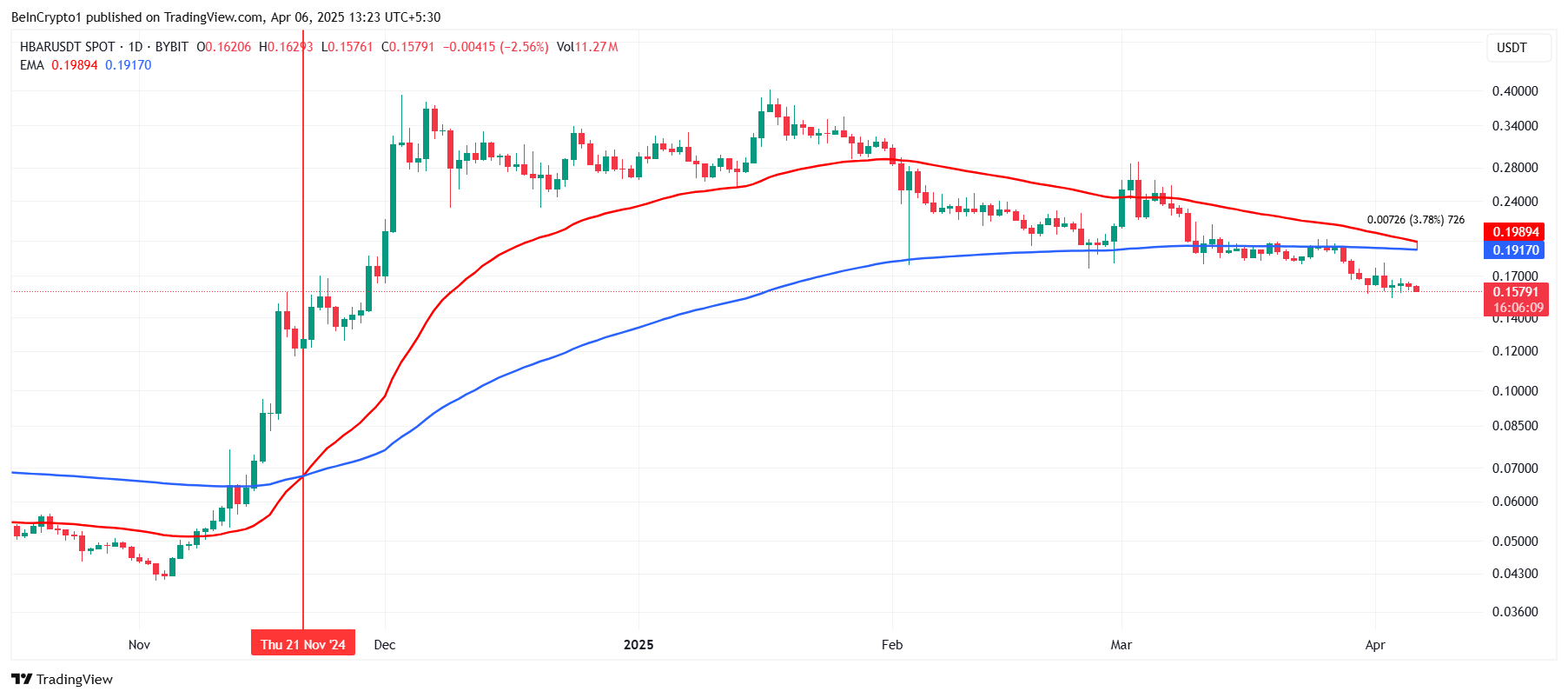
HBAR Price Holds Above Support
HBAR is currently trading at $0.157, holding just above the critical support level of $0.154. While it has managed to stay above this support for now, it remains vulnerable to falling through it if bearish sentiment intensifies. A break below $0.154 would likely trigger a deeper decline, with the next support level at $0.143.
If HBAR fails to hold the $0.154 support, a further drop could confirm the Death Cross formation. Should this scenario unfold, the price might continue downward toward $0.143, and further declines could follow, pushing HBAR toward $0.12 or lower.
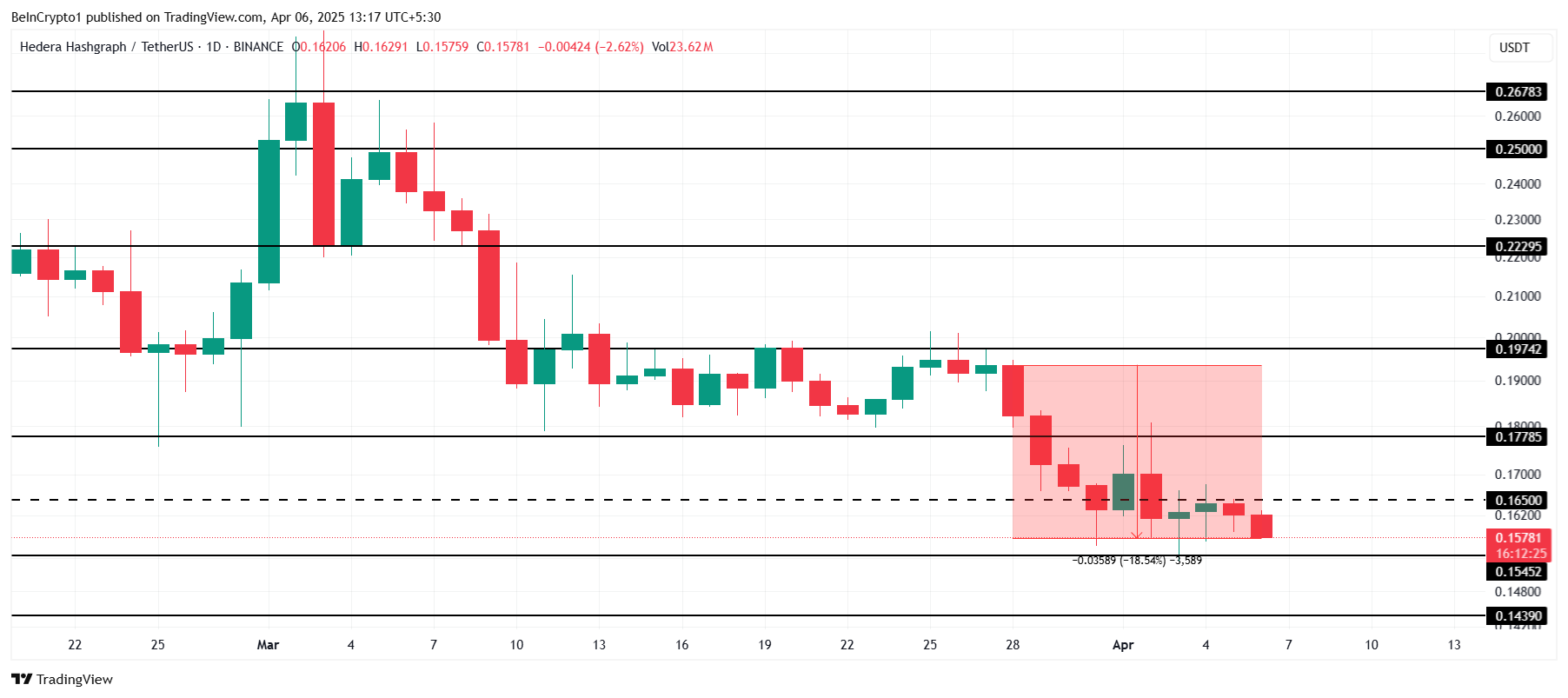
On the other hand, if HBAR can bounce back from $0.154, a recovery rally is possible. Successfully flipping the $0.165 resistance into support could push the price toward $0.177. This movement would bring the liquidation scenario closer to reality, as short traders could face significant losses in a reversal.
Disclaimer
In line with the Trust Project guidelines, this price analysis article is for informational purposes only and should not be considered financial or investment advice. BeInCrypto is committed to accurate, unbiased reporting, but market conditions are subject to change without notice. Always conduct your own research and consult with a professional before making any financial decisions. Please note that our Terms and Conditions, Privacy Policy, and Disclaimers have been updated.
Market
SEC Reconsiders Howey Test Use in Crypto Oversight


The US Securities and Exchange Commission (SEC) is preparing to review several internal staff directives that influence how the regulator oversees the crypto industry.
This move aligns with President Donald Trump’s latest Executive Order on deregulation. It also follows guidance from the Department of Government Efficiency (DOGE), currently led by Elon Musk.
SEC to Review Howey Test and Investment Contract Framework Application
On April 5, Acting SEC Chair Mark Uyeda noted that the upcoming reviews could result in changes or full withdrawal of some statements. He emphasized that the agency’s objective is to ensure its guidance remains relevant and consistent with its current priorities.
“The purpose of this review is to identify staff statements that should be modified or rescinded consistent with current agency priorities,” the Commission stated.
One of the main targets of this reassessment is the SEC’s current framework for determining whether a digital asset qualifies as a security. This guideline relies heavily on the decades-old Howey Test.
It also reflects the views of former SEC official Bill Hinman, shared during a 2018 speech. Hinman argued that the degree of decentralization behind a token should matter more than how it was originally sold.
This view has influenced several enforcement decisions, including the legal battle with Ripple over XRP. However, many in the industry argue that the Howey Test is no longer suitable for modern blockchain technologies.
This development may pave the way for a dramatic shift in how crypto assets are evaluated. Crypto analyst Jesus Martinez believes that removing or revising the current framework could be a major turning point for retail investors in the US.
He argues that regulatory constraints have long blocked everyday users from participating in projects like launchpads and node operations. These platforms are often only accessible to those with foreign identification or institutional workarounds.
Martinez says that dismantling such outdated rules could help level the playing field for American investors.
“It’s been hurting retail for the longest time & we need to prioritize American citizens, this is a big step in that direction,” Martinez concluded.
Beyond the Howey-based framework, the SEC is also reviewing several other documents. One of these is a bulletin outlining regulatory concerns around mutual funds investing in Bitcoin futures.
The financial regulator is also reviewing a risk alert from the Division of Examination. This alert warns that digital assets pose unique investor risks, including regulatory uncertainty and cybersecurity threats.
Additionally, the Commission is reassessing whether state-chartered banks and trust companies can act as qualified custodians under the SEC’s Custody Rule.
The crypto community believes the SEC’s broad reassessment points to a shift toward a more modern and flexible regulatory approach. This shift could reshape the crypto landscape for both retail investors and institutional participants
Disclaimer
In adherence to the Trust Project guidelines, BeInCrypto is committed to unbiased, transparent reporting. This news article aims to provide accurate, timely information. However, readers are advised to verify facts independently and consult with a professional before making any decisions based on this content. Please note that our Terms and Conditions, Privacy Policy, and Disclaimers have been updated.
Market
XRP High Stakes Setup: Analyst Warns Of Sharp Move To $17 Or $0.65
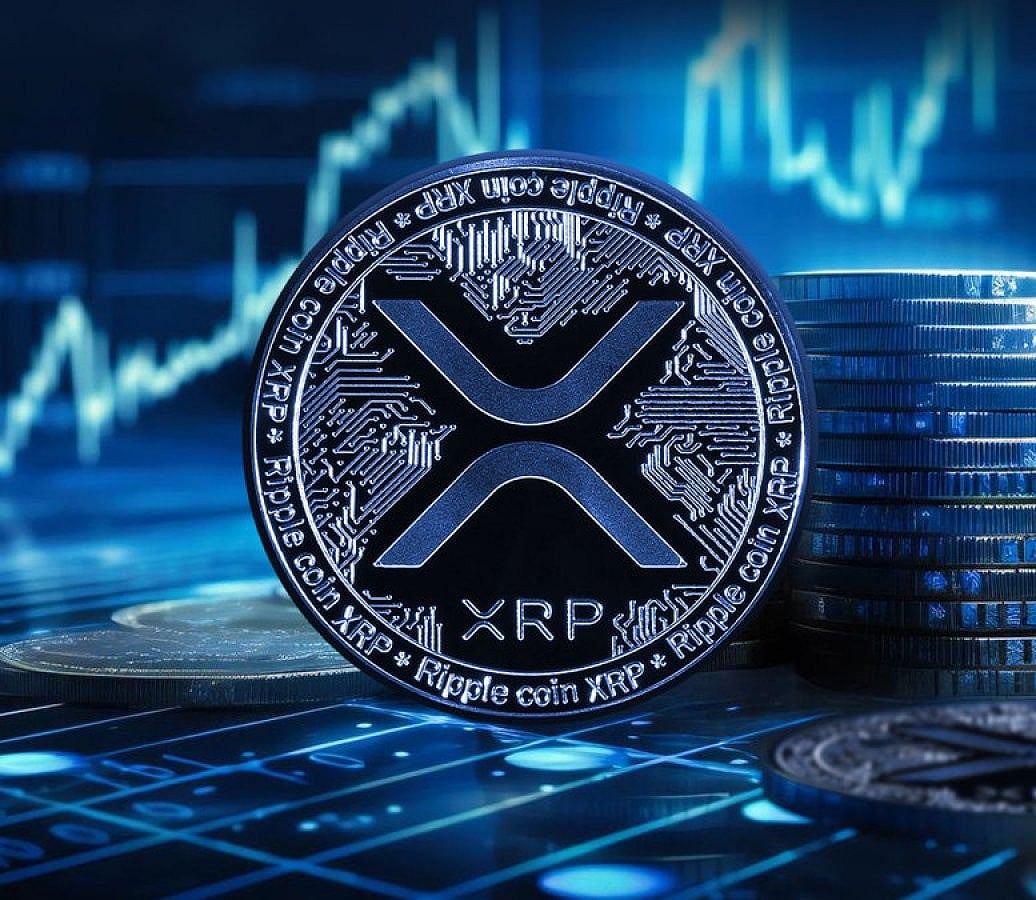
Renowned market analyst Egrag Crypto has shared another puzzling XRP price prediction stating the altcoin is at a major technical crossroads. This development follows a resilient price performance in the past week during which XRP gained by 2.07% as the broader crypto market stands bullish despite the announcement of new US trade tariffs.
Ascending Wedge Signals Incoming Volatility — Which Way Will XRP Break?
In an X post on April 5, Egrag Crypto issued a dual price forecast on the XRP market based on the potential implications of a forming Ascending Broadening Wedge pattern. Also known as the megaphone pattern, the chart formation signals increasing volatility and investor indecisions. It looks like a widening triangle with two diverging trendlines, as seen in the chart below.
The Ascending Broadening Wedge presents high unpredictability and offers a 70% chance of a downside breakout and a 30% probability of an upside breakout. However, despite this statistical bias, the analyst postulates the chances of an upside remain valid if certain conditions are met.
According to the analyst, XRP must first close above $3.50 for a bullish scenario to start taking shape. In doing so, the altcoin would surpass the local peak of the current bull cycle and confirm intentions of an upward momentum. Following this move, XRP bulls should then aim for the $5 range—another key resistance level that could determine the asset’s next major move.
Interestingly, Egrag explains that a failure to convincingly close above $5 would only be a critical development that completes the formation of the Ascending Wedge Pattern and increases the likelihood of a breakout. If this rejection occurs, XRP is expected to retest the $1.90 area and make a second push toward the $5, this time breaking through and closing above $6.
Egrag states the breakout above $6 would validate the bullish run and likely spark a surge toward double-digit territory with a potential target at $17.50 based on the Ascending Wedge Pattern. However, should XRP bulls fail to meet these conditions or follow this sequence, the historical 70% chance of a breakdown points to a downside target of around $0.65.
XRP Price Overview
At the time of writing, XRP trades at $2.14 reflecting a price gain of 0.60% in the past day. Meanwhile, the token’s trading volume is down by 62.92% in the past day indicating a fall in market engagement and a declining buying pressure following the recent market gain. In making any significant uptrend, XRP bulls must first reclaim the following resistances at $2.47 and $2.61 while avoiding any slip below the $2 support zone.
-

 Market20 hours ago
Market20 hours agoDogecoin Faces $200 Million Liquidation If It Slips To This Price
-

 Market21 hours ago
Market21 hours agoSEC’s Crypto War Fades as Ripple, Coinbase Lawsuits Drop
-
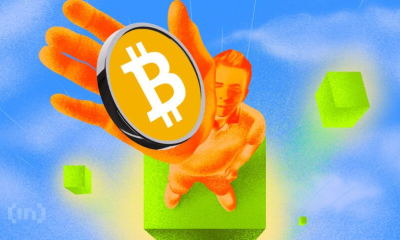
 Bitcoin21 hours ago
Bitcoin21 hours agoArthur Hayes Sees Tariff War Pushing Bitcoin Toward $1 Million
-
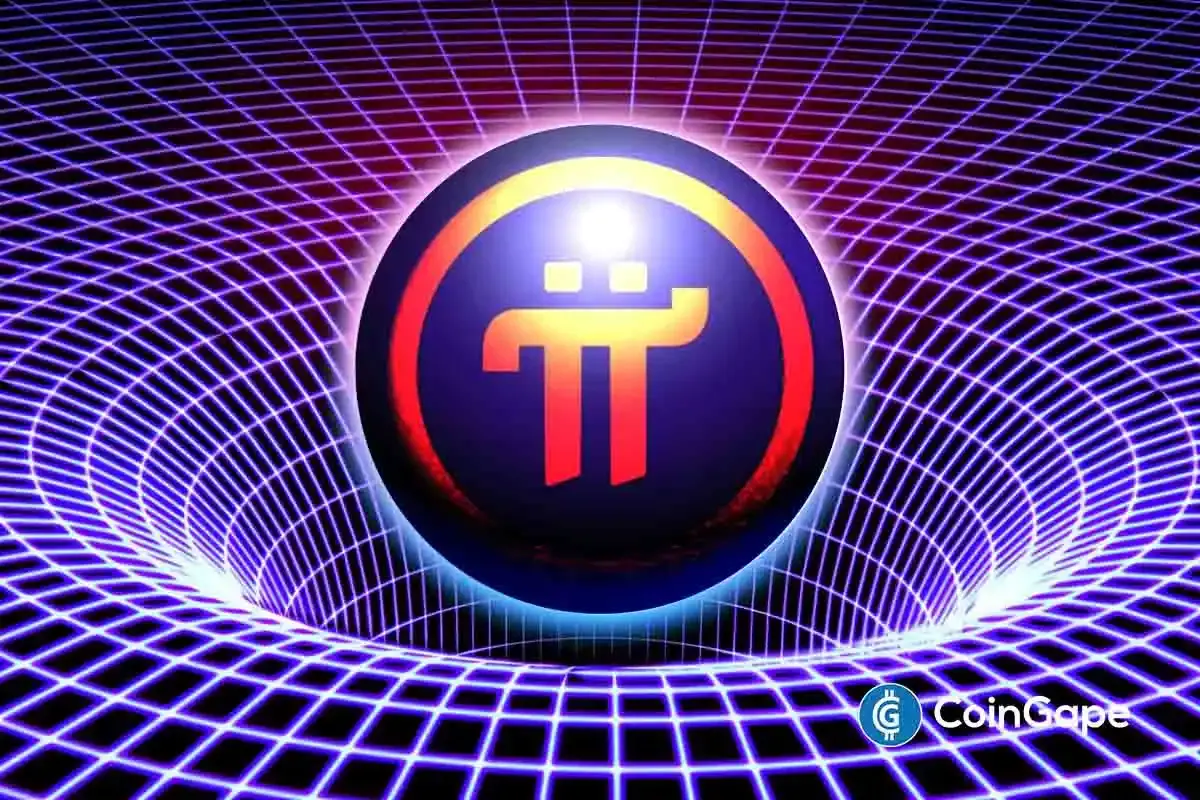
 Altcoin20 hours ago
Altcoin20 hours agoExpert Calls On Pi Network To Burn Tokens To Revive Pi Coin Price
-

 Ethereum20 hours ago
Ethereum20 hours agoCrypto Analyst Who Called Ethereum Price Dump Says ETH Is Now Undervalued, Time To Buy?
-
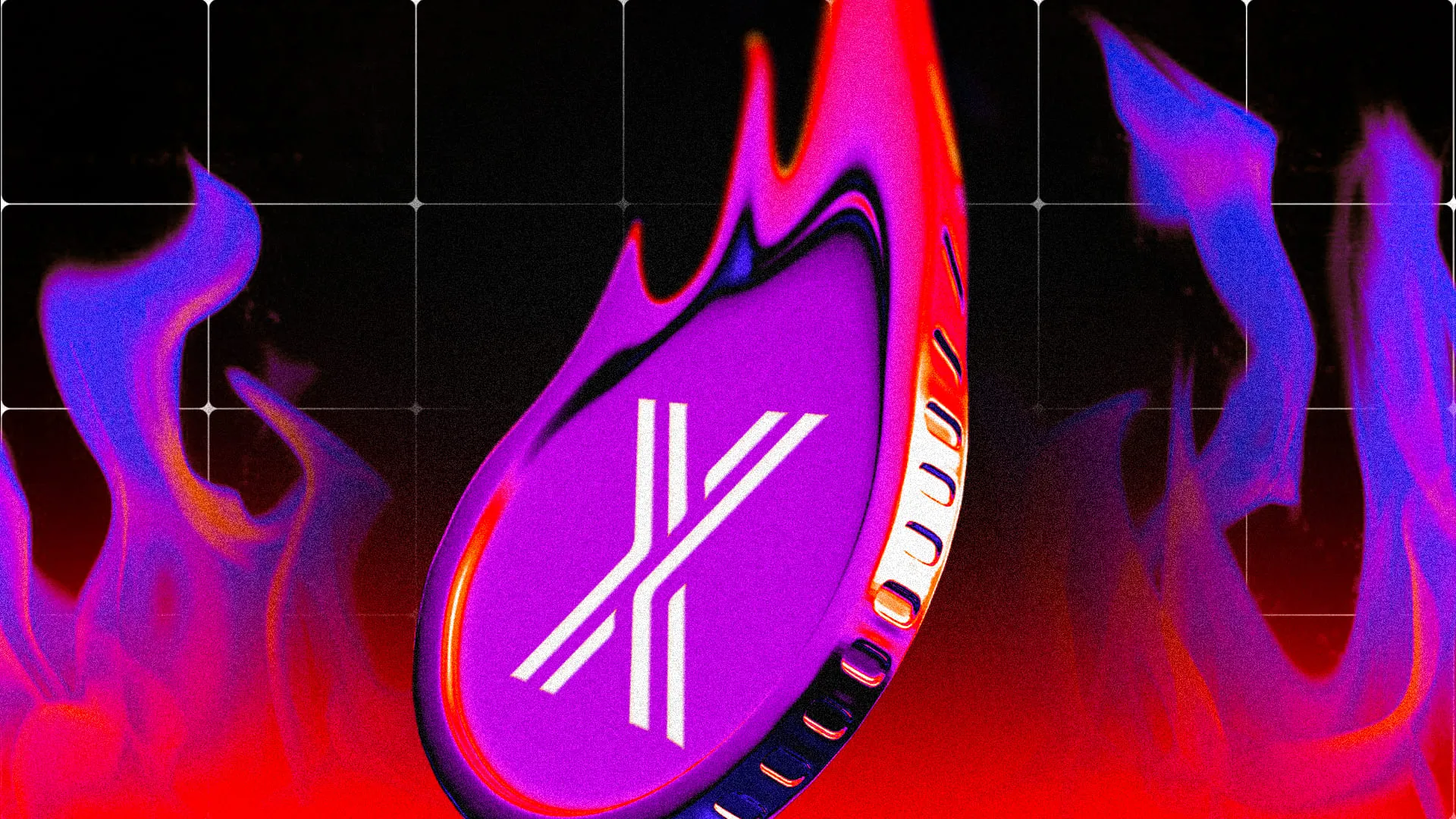
 Market18 hours ago
Market18 hours agoIMX Price Nears All-Time Low After 30 Million Token Sell-Off
-
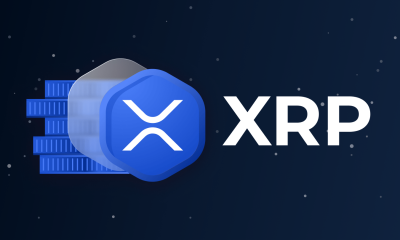
 Market17 hours ago
Market17 hours agoKey Levels To Watch For Potential Breakout
-

 Market23 hours ago
Market23 hours agoOnyxcoin (XCN) Price Nears Death Cross After 50% Decline


